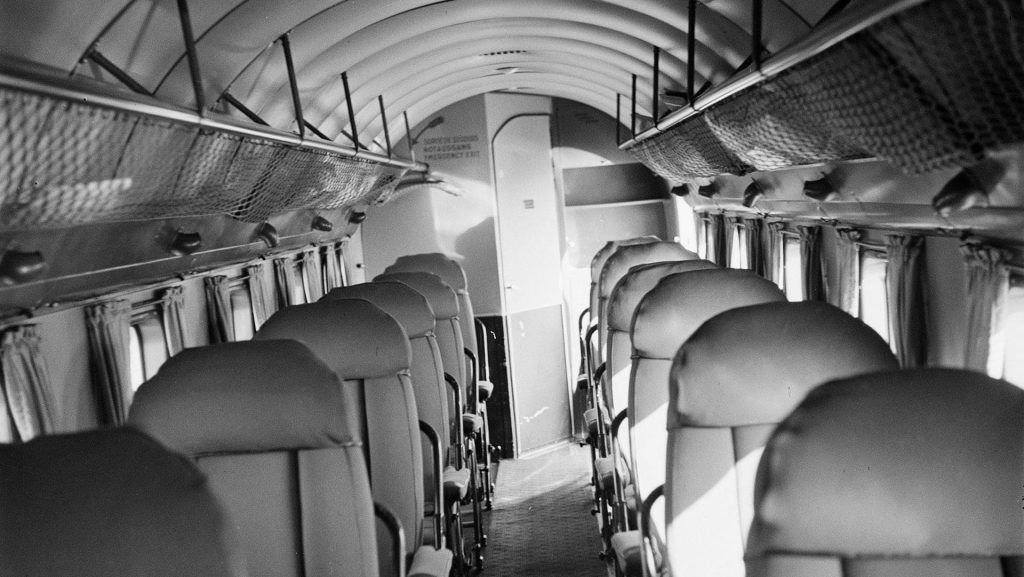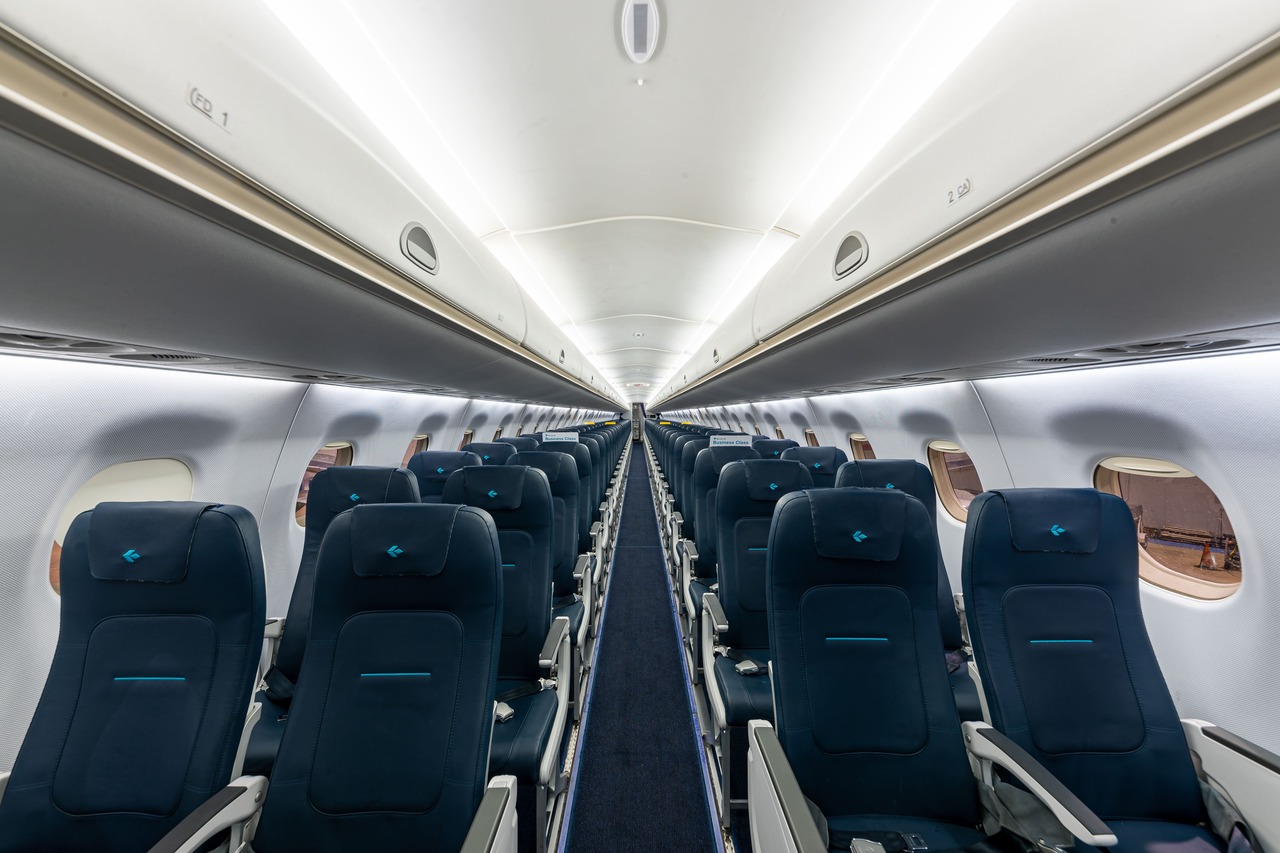Comfortable, covered, reclining and strictly equipped with seat belts: modern aircraft seats are small, comfortable, multifunctional armchairs.
Like all other parts that make up an aeroplane, the seats have evolved over time, eventually becoming as we know them today.
The first aeroplanes
As we mentioned in our article on the history of tray tables, during the 1920s and 1930s, aeroplanes started to carry passengers, giving birth to commercial aviation.
To start with, aeroplanes were a luxury that few people could afford. The cabins of the first airliners were therefore ‘furnished’ like parlours to satisfy the tastes of their élite passengers, with carpets, wide wicker armchairs and goose feather pillows.
More passengers = more seats.

With the increase in demand and the increasingly widespread use of aeroplanes for civil transport, the layout and design of aeroplane seats was adapted accordingly.
In the 1950s, the principles of a new discipline, Ergonomics, were also taking hold. This put users’/passengers’ needs at the core of the design of home, work and transport environments.
Aircraft interiors were reorganised with new layouts and the seats almost immediately began to be configured as we know today: rows of seats facing the nose and divided by a central aisle. Just like in cinemas.
After World War II, In-Flight Entertainment (IFE) began to appear and films were projected on a screen at the front, between the cabin and the cockpit.
Headphone music connected through the armrests arrived in 1985 and was then replaced by computers integrated into the seats in the new Millennium.
A matter of safety
Aluminium tubing and leather safety belts started to be installed on more modern aeroplane seats at the end of the 1930s. Thicker padding and velvet upholstery made travel more pleasant and the seats were reinforced in case of turbulence.
More than anything else, safety has played a fundamental role in the transformation of aircraft interiors, especially the seats.
Today, aircraft seats are built to ensure the utmost stability to passengers according to specific rules and with ever lighter and stronger materials.
The aeroplane seats of the future
Some believe that we will soon see further changes in aeroplane seating layouts and various designers are proffering new solutions.
Among the most revolutionary designs, according to Wired magazine, is the one by the designer Emil Jacobs from Cambridge, Massachusetts, which uses the vertical space between overhead lockers to carve out relaxation areas.
Designer Benjamin Hubert and his studio Layer have designed a prototype for aeroplane seats made out of smart fabrics to improve passengers’ flight experience. The fabrics acquire body data (temperature, weight, movements, etc.) through an app.




